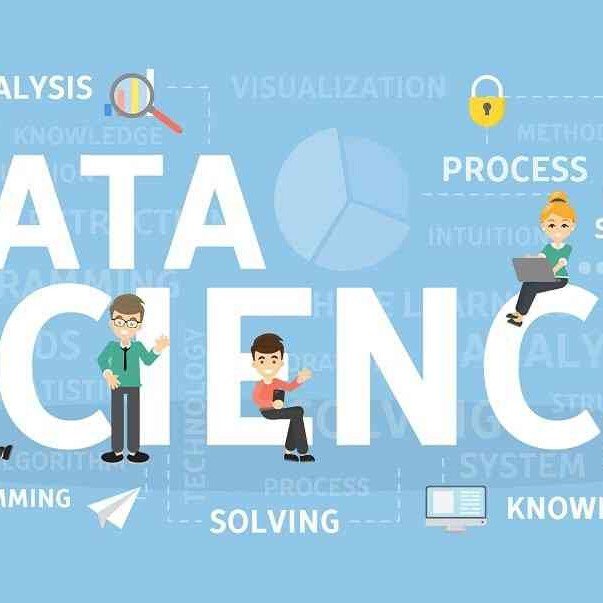1. A virtual symptom checker and diagnostic
Virtual predictive platforms developed using data science help users first assess their symptoms and offer diagnostic suggestions.
These platforms make use of machine learning models that use natural language processing( NLP) to juxtapose patient symptoms with researched medical standards to make a diagnosis for the patient, providing a personalized experience.
They also help with medication reminders, appointment reminders, etc., all towards the adoption of a healthy lifestyle.
An example is the Ada Health App, a medical AI that simplifies healthcare journeys and helps people take care of themselves.
2. Preventive Medicine
Prevention is the modern approach to population healthcare.
Aside from improving the quality of life of patients, it also helps save costs.
Personal health data of patients from monitoring devices and health records can be analyzed by data science projects, running them through machine learning algorithms to identify risk factors for disease and illness and thereafter predict the occurrence of these diseases, including the timeframe of onset.
This helps boost patient treatment outcomes and cuts health spending and insurance claims.
3. Medical Imaging
Physicians use medical imaging techniques like magnetic resonance imaging (MRI), X-rays, computed tomography (CT scan), mammography, etc. to visualize the interior parts of the human body.
Commonly, they inspect images produced by these techniques to find irregularities within them and make diagnoses.
Due to difficulties in finding minute irregularities, this manual review of imaging images often results in missed findings and the wrong diagnosis.
This is especially applicable in the evaluation of cancers, especially in the early stages.
Data science is used to process images from these radiological investigations, enhance them for better quality and clarity, and interpret and extract insights from them for suggestions on treatment plans.
Powered by thousands of medical images, machine learning algorithms are able to compare images to previous scans in order to arrive at the most likely diagnosis.
Image processing techniques like image recognition, enhancement, reconstruction, etc. are used to process medical images, find microscopic or obscured irregularities, and make the right diagnosis.
Deep learning algorithms extract insights from these images to make the right diagnosis and arrive at the best treatment plan.
Insights from these images make a difference in the patient’s treatment.
4. Data-driven treatment plans
Data science, through predictive analysis, provides health professionals with insights into treatment effectiveness earlier than was previously possible.
This is especially useful in the management of chronic medical conditions.
Physicians make faster decisions in patient care based on insights from these data science platforms, and using inputs from machine learning models, they consider the impact of contributory factors like environmental and socioeconomic factors on patient health.
They speed up the decision-making process, allowing for a switch from an ineffective course of treatment to a better management plan.
5. Prevention of re-admissions
Following patients’ management on admission, they get discharged fairly stable to recuperate at home away from the hazards in health facilities like nosocomial infections.
Oftentimes, some only get worse and require re-admission instead of sustaining their improvement.
This unexpected turn of events is a major problem in healthcare worldwide, as it costs the industry billions to manage.
Data science algorithms can review patient health data, identify those at risk, and predict the probability of readmission.
Those likely to be re-admitted are given the necessary added care and monitoring to prevent it.
This has been reported to lead to fewer hospital admissions, readmissions, and increased healthcare savings.
6. Monitoring infectious diseases
Health organizations make use of data science to monitor the spread of infectious diseases.
It helps in understanding how these diseases spread and making future predictions of the extent of the spread.
These predictions help these organizations and the population prepare for and design preventive measures to combat the spread of infectious diseases.
An example was the COVID-19 pandemic.
Data science helped forecast metrics for daily, weekly, and monthly cases.
7. Genomic research
Many diseases have a genetic origin, and understanding the patient’s genetic makeup sheds light on understanding the diseases and preferring tailored treatment for the patient.
While genomics is the study of the entirety of a person’s genes (the genome) and the interactions of those genes among themselves, genetics has to do with the interplay between genes and heredity—traits being passed from parents to offspring.
Genomics the conventional way took time and was expensive.
Data science provides a cheap and fast way to analyze an individual’s genetic data, search for irregularities and defects within them to understand the disease, and find connections between the genetic information of individuals, their health, and the diseases they have.
It also helps in gene therapy, which involves inserting genetic material into cells to correct a mistake at the genetic level, predicting how prescribed medications would work, and hence identifying the best medication to use in treatment.
This is the core of personalized care—the end to “one size fits all” treatments.
8. Drug discovery and development
Drug discovery is a complex, time-consuming, and expensive process that involves heavy laboratory testing and experimentation.
The pharmaceutical industry uses data science to simplify the process and shorten the time needed for drug testing.
Using machine learning algorithms and mathematical models, researchers can create virtual models equivalent to biological systems to simultaneously test different drug compositions, optimizing and increasing the success rate of drug testing.
Predictions are at the core of the use of data science in drug development, including predictions on the best experiments that would yield the best outcomes and predicting how the drugs will act in the human body and their possible side effects for the discovery of effective drugs.
Ultimately, data science revolutionizes the pharmaceutical industry by lowering running costs, decreasing drug testing time frames and failure rates, and delivering tested drugs to patients at a faster pace.
9. Management of health professionals and resources
Staffing is related to cost; an ineffective health facility with more staff than needed loses money, while one with less than needed observes a poor patient experience.
Data science is used to create predictive models that accurately forecast patient load per time and the number of health professionals needed to care for them.
With this demand forecasting technique, health facilities can accurately and periodically map out the allocation of staff to patients, track their work, and allocate bed spaces as needed.
Obisesan Damola
Damola is a medical doctor who has worked in the Nigerian healthcare industry for a little over 3 years in a number of primary, secondary, and tertiary hospitals. He is interested in and writes about how technology is helping to shape the healthcare industry. He graduated from the College of Medicine, University of Ibadan, the foremost medical training institution in Nigeria.



